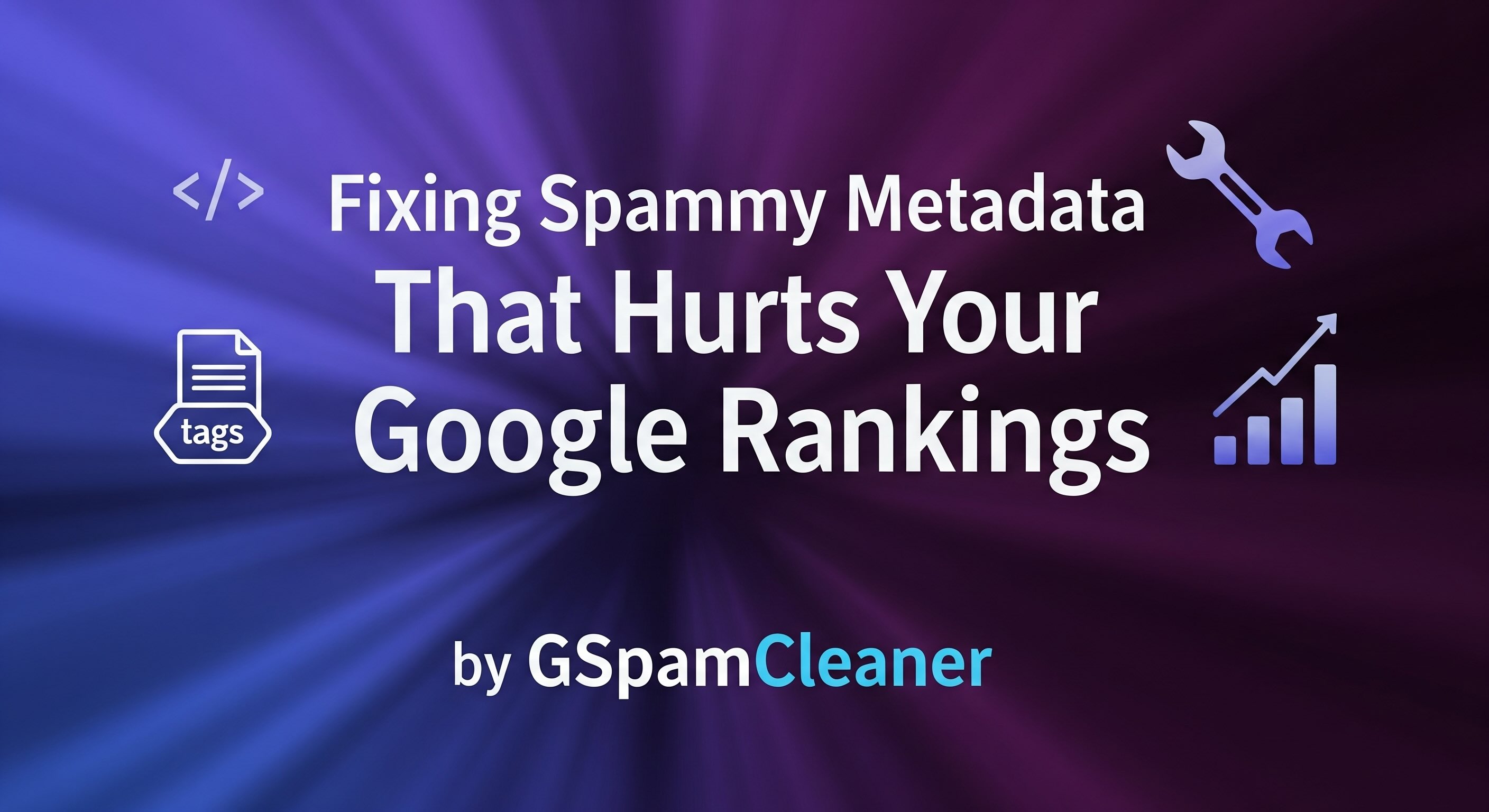GSpamCleaner Team
2025-08-10 • 5 min read
Fixing Spammy Metadata That Hurts Your Google Rankings
When your WordPress site suffers from spam attacks or SEO penalties, one common but often overlooked problem is spammy metadata, especially in your meta titles and descriptions. These are crucial elements that Google uses to understand and display your pages in search results. If hackers or bad plugins inject spam keywords or auto-generated content into your metadata, it can severely damage your search rankings and user trust.

⚠️ Warning: Spammy Metadata Detected
If your meta titles and descriptions contain keyword stuffing, misleading claims, or duplicate content, you may be hurting your rankings. Fix these issues now before Google demotes your pages.
🔍
What is Spammy Metadata?
Spammy metadata refers to title tags and meta descriptions that violate Google's Webmaster Guidelines by being deceptive, stuffed with keywords, duplicated across pages, or irrelevant to page content. These issues can trigger algorithmic penalties and reduce click-through rates.
Common Problems with Spammy Metadata
- •Keyword stuffing in titles and descriptions
- •Duplicate meta tags across multiple pages
- •Misleading claims that don't match page content
- •Overly long or truncated meta tags
- •Missing or auto-generated metadata
⚙️
How to Fix Spammy Metadata
Step 1: Audit Your Current Metadata
- Use Screaming Frog or Google Search Console to export all your meta titles and descriptions
- Identify duplicates, over-optimized tags, and misleading claims
- Check for proper length (50-60 chars for titles, 150-160 chars for descriptions)
Step 2: Rewrite Problematic Metadata
- Create unique, descriptive titles for each page
- Focus on readability and user intent rather than keyword density
- Include primary keywords naturally near the beginning
- Write compelling meta descriptions that accurately summarize content
Step 3: Implement Technical Fixes
- Ensure your CMS isn't auto-generating duplicate metadata
- Set up proper canonical tags to indicate preferred versions
- Use robots meta tags appropriately for paginated or filtered content
Step 4: Monitor Improvements
- Track click-through rates in Google Search Console
- Monitor ranking changes for affected pages
- Watch for indexation issues that might indicate deeper problems
🌟
Metadata Best Practices
- •Be accurate: Metadata should truthfully represent page content
- •Be concise: Stay within recommended character limits
- •Be unique: Every page should have distinct metadata
- •Be compelling: Write for humans first, search engines second
- •Be relevant: Include keywords naturally where appropriate
⚙️
Automated Process
Achieve all this with just one click using our plugin
GSpamCleaner is currently in development. Join our waitlist below to get early access when we launch, plus exclusive pricing for early adopters.
Don’t want to wait? Here’s what you can do:
❓
Frequently Asked Questions
🔍 Need Help With Your Metadata?
Let our experts audit your meta tags and suggest improvements to boost your click-through rates and rankings.
About the GSpamCleaner Team
Our expert team of WordPress security specialists and SEO professionals has been protecting websites from Google spam penalties since 2020. We've helped over 500 websites recover from spam penalties and maintain clean search rankings.
🚀 Ready to Protect Your WordPress Site?
Join our waitlist for early access to GSpamCleaner and protect your site from Google spam penalties.
Join Waitlist - FREE